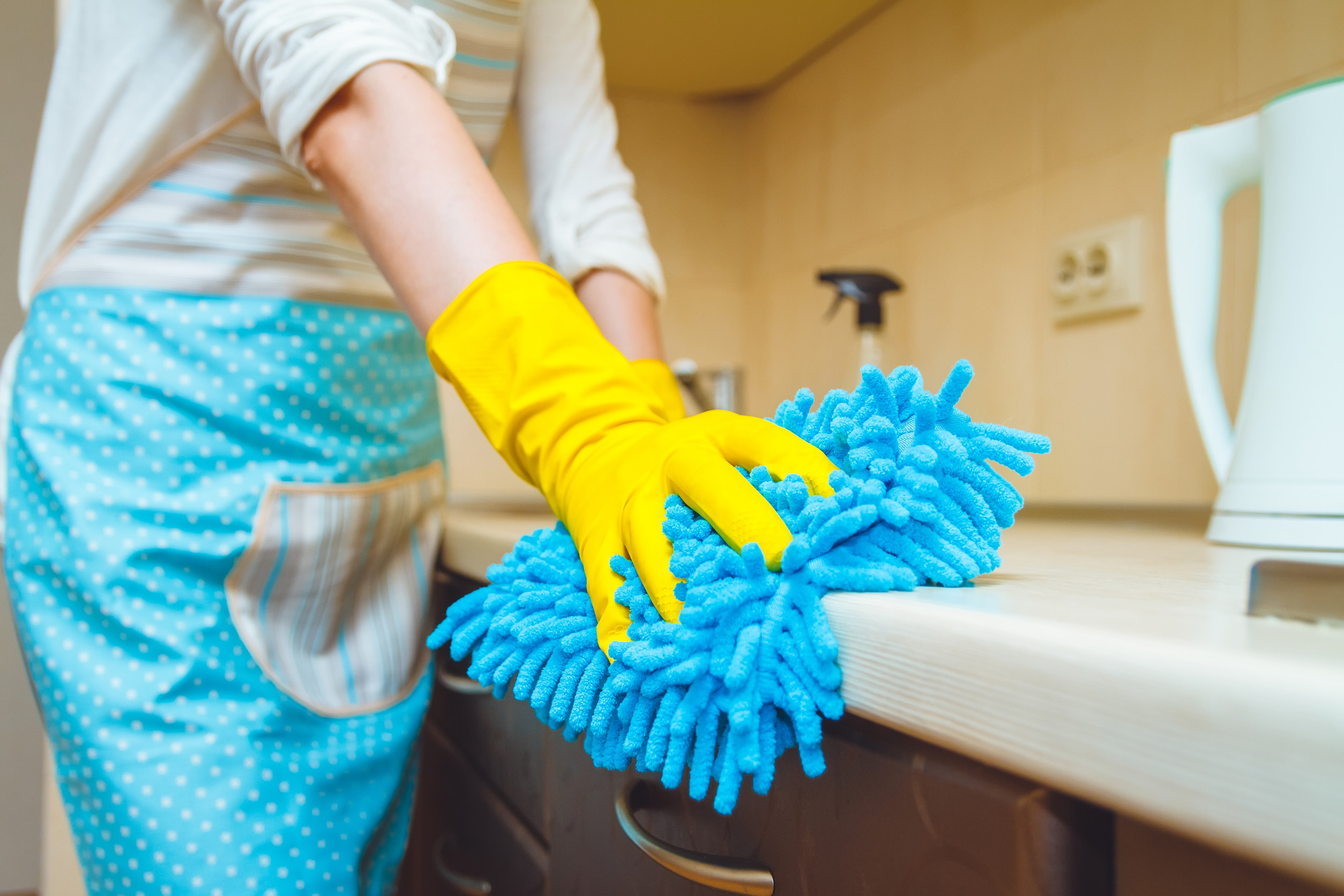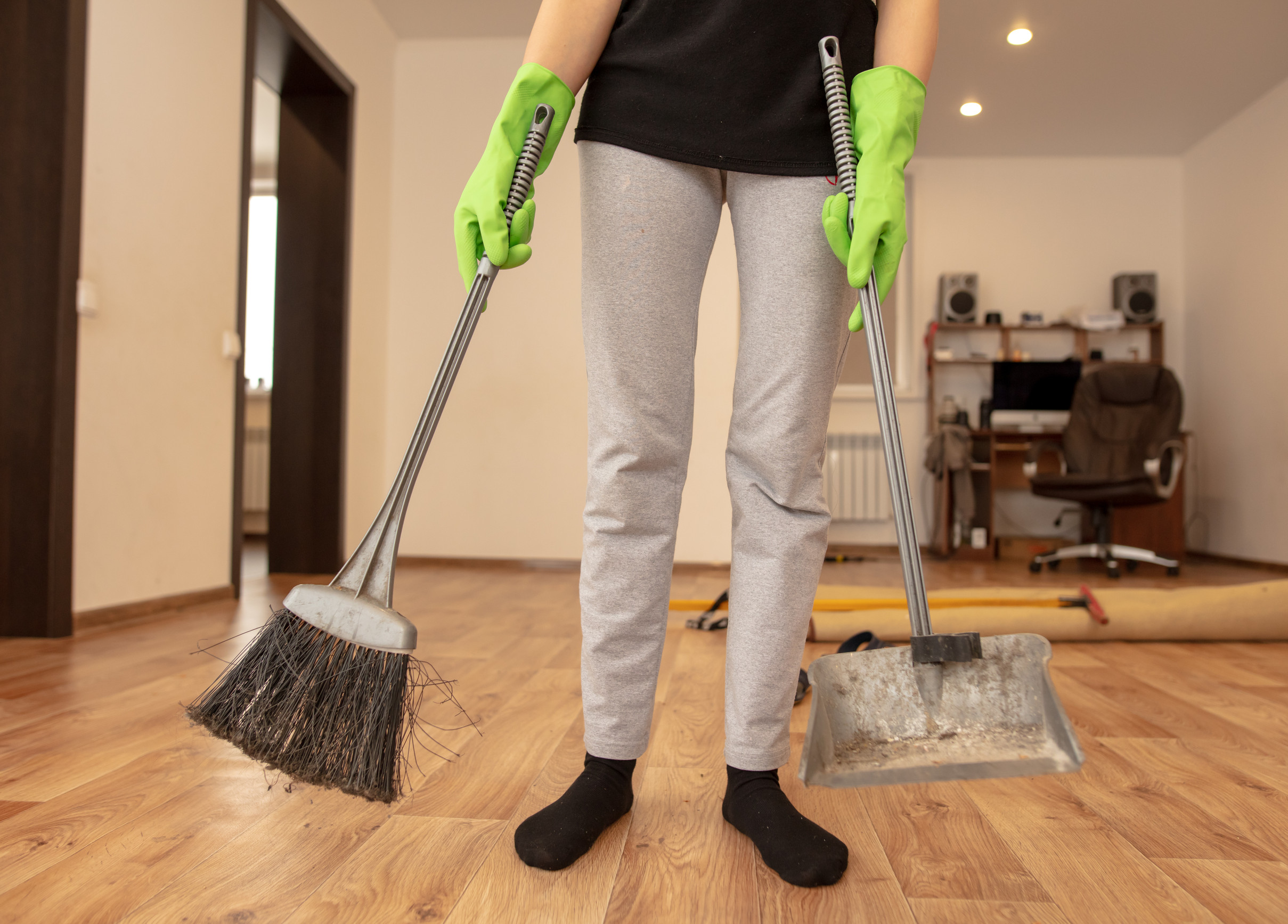Cleaning is supposed to make your home sparkle, not sabotage it. Yet, many well-intentioned habits can actually lead to a dirtier, less hygienic space—without most people even realizing it. The mop gets used, the counters wiped, the vacuum run, and yet something still feels off.
Dust returns faster than expected, odors linger, and no matter how hard one tries, that elusive “truly clean” feeling never quite arrives. It turns out that it’s not always about how often the cleaning gets done—but how it’s done that makes all the difference.
1. Using the Same Cloth for Everything
A single rag may seem like a multitasking marvel, but it’s often a one-way ticket to cross-contamination. Wiping the bathroom sink and then moving to the kitchen counters without switching cloths spreads bacteria across surfaces that should stay separate. Even if the cloth looks clean, it’s likely harboring germs from the last few uses. Using the same cloth throughout the house means the dirtiest zones get equal billing with the cleanest, which defeats the entire point of sanitizing. Designating separate cloths for different rooms—and washing them frequently—is a crucial step in keeping the home truly clean.
2. Overloading the Vacuum Bag or Filter
A vacuum’s job is to suck up dirt, not spit it back out—but that’s exactly what happens when the bag or filter is too full. Many people forget to check these until performance noticeably drops, but by then, dust and allergens are already escaping back into the air. Overloaded filters prevent proper suction, meaning floors and carpets never get as clean as they should.
The air circulation becomes compromised too, creating a perfect storm of dust buildup. Emptying the bag or cleaning the filter regularly ensures the vacuum works at full capacity and doesn’t become part of the problem.
3. Spraying Cleaner Directly on Surfaces
It might feel efficient to spritz cleaner directly onto countertops, mirrors, and furniture, but this habit often leads to streaks, residue, and even damage. Spraying directly can oversaturate surfaces, especially delicate ones like wood or electronics, making them more prone to grime and sticky buildup. In some cases, the product sits on top without actually cleaning, attracting more dust and debris in the long run. The better method is to spray the cleaner onto a cloth and then apply it evenly to the surface. This allows more control over the amount of product used and ensures that surfaces are truly clean—not just shiny.
4. Ignoring High-Touch Areas
Light switches, remote controls, doorknobs, and refrigerator handles often get overlooked during routine cleaning. Yet these are some of the most bacteria-prone spots in the entire home. Neglecting them means germs spread from person to person, room to room, undoing the rest of the cleaning work. These surfaces may not appear dirty, but that doesn’t mean they’re safe or sanitary. A quick disinfectant wipe or targeted clean can prevent a small oversight from becoming a major hygiene gap.
5. Mopping with Dirty Water
A mop dipped in grimy water is essentially a dirt-spreading device. Once the water in the bucket turns murky, it stops cleaning and starts redistributing the same filth onto every inch of the floor. While the effort feels productive, the end result is often sticky or streaky floors and lingering odors. Clean water and a rinsed mop head are non-negotiable for effective floor care. Changing the water multiple times during a single cleaning session can make a big difference in the final outcome.
6. Forgetting to Clean Cleaning Tools
Sponges, brushes, vacuums, and even washing machines are often left to their own devices between uses. But when cleaning tools aren’t cleaned themselves, they become breeding grounds for bacteria, mildew, and bad smells. A sponge left wet and crumpled in the sink becomes less of a helper and more of a hazard. The tools meant to purify a space should not become part of what contaminates it. Regular maintenance of these essentials helps ensure every cleaning session actually results in a cleaner home.
7. Dusting Without a Damp Cloth
Dry dusting may give the illusion of tidiness, but it usually sends more particles into the air than into the cloth. Those airborne particles then settle elsewhere—on bookshelves, in vents, on couches—leading to a cycle of never-ending dust. A damp microfiber cloth, on the other hand, traps and holds dust instead of redistributing it. Using the wrong method turns dusting into a temporary fix rather than a lasting clean. To break the cycle, it’s important to capture dust, not just chase it around the room.
8. Using Too Much Cleaning Product
More isn’t always better—especially when it comes to soaps, sprays, and scrubs. Excess cleaner can leave behind sticky residues that actually attract dirt and dust faster. Floors start to feel grimy again in just a day or two, and surfaces lose their shine more quickly. It can also make rinsing more difficult, leading to buildup over time. Following label instructions and using only what’s necessary leads to better results and a longer-lasting clean.
9. Cleaning in the Wrong Order
Cleaning out of sequence can undo hours of effort. For example, vacuuming before dusting means any particles shaken loose from shelves or furniture end up right back on the floor. Mopping before wiping counters allows new crumbs to fall onto freshly cleaned surfaces. There’s a method to the madness, and getting the order right can be the difference between sparkling success and frustrating do-overs. Starting with high surfaces and working downward ensures debris is always falling onto areas that haven’t yet been cleaned.
The Rules To Cleaning Your Home
Cleaning a home isn’t just about diligence—it’s about strategy. These nine habits may seem minor or even harmless, but they can drastically reduce the effectiveness of any cleaning routine. Being mindful about tools, techniques, and sequences ensures that cleaning time actually results in a fresher, healthier living space. Avoiding these pitfalls doesn’t require more work, just smarter work.
Have a habit to add—or one you recently fixed? Drop a comment and share your thoughts!
Read More
The ‘One-Minute Rule’ That Makes Cleaning Way Easier
Why Southern Summers Are the Worst for Car Interiors


